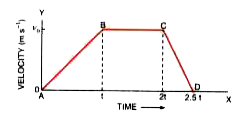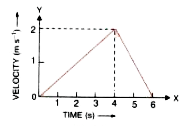Give experimental evidences to show that
(i) cathode rays travel in straight lines
(ii) cathode rays possess kinetic energy
(iii) most part of the atom is hollow
(iv) the space occupied by the nucleus is much smaller than that by an atom.
Step by step video & image solution for Give experimental evidences to show that (i) cathode rays travel in straight lines (ii) cathode rays possess kinetic energy (iii) most part of the atom is hollow (iv) the space occupied by the nucleus is much smaller than that by an atom. by Chemistry experts to help you in doubts & scoring excellent marks in Class 11 exams.
Updated on:21/07/2023Topper's Solved these Questions
- STRUCTURE OF ATOMBOOK - ICSECHAPTER - STRUCTURE OF ATOMEXERCISE - Very Short Answer Type Questions
30 Videos
- STRUCTURE OF ATOMBOOK - ICSECHAPTER - STRUCTURE OF ATOMEXERCISE - Short Answer Type Questions
30 Videos
- STRUCTURE OF ATOMBOOK - ICSECHAPTER - STRUCTURE OF ATOMEXERCISE - NCERT Textbook Exercises
67 Videos
- STATES OF MATTER : GASES AND LIQUIDSBOOK - ICSECHAPTER - STATES OF MATTER : GASES AND LIQUIDSEXERCISE - NCERT TEXT-BOOK EXERCISES (With Hints and Solutions)
23 Videos
- THE s - BLOCK ELEMENTSBOOK - ICSECHAPTER - THE s - BLOCK ELEMENTSEXERCISE - NCERT TEXT-BOOK. EXERCISES (WITH HINTS AND SOLUTIONS)
55 Videos
Similar Questions
Give the experimental evidences which show that
cathode rays travel in straight lines.
View SolutionThe existence of negatively charged particle in an atom was shown by J.J. Thomson as a result of the studies of the passage of electricity through gases at extremely low pressure known as discharge tube experiments. When a high voltage of the order of 10,000 volts or more was impressed across the electrodes, some sort of invisible rays moved from the negative electrode to the positive electrode these rays are called as cathode rays.

Cathode rays travel in straight path in absence of electrical and magnetic field . Cathode rays consist of material part and charged particles? Cathode rays produce X-rays and light is emitted when they strike on ZnS screen. Cathode rays penetrate through thin sheets of aluminium and other metals . They affect the photogenic plate and passes heating effect when they strike on metal foil. The raito of charge to mass i.e charge/mass is same for all the cathode rays irrespective of the gas used in the tube.
The existence of positively charged particle in an atom was shown be E. Goldstein. He repeated the same discharge tube experiments by using a perforated cathode. It was observed that when a high potential difference was applied between the electrodes, not only cathode rays were produced but also a new type of rays were produced simultaneoulsy from anode moving towards cathode and passes through the holes or canal of the cathode. These termed as canal rays or anode rays.
These rays travel in straight lines and consists of positively charged particles. These rays have kinetic energy and produces heating effect also. The e/m ratio of these rays is smaller than that of electrons. Unlike cathode rays, their e/m value is dependent upon the nature of the gas taken in the tube. These rays produced flashes of light on ZnS screen and can pass throughs thin metal foils. They can produce physical and chemical changes and are capable to produce ionisation in gases.
Which is not true with respect to cathode rays?
View SolutionThe existence of negatively charged particle in an atom was shown by J.J. Thomson as a result of the studies of the passage of electricity through gases at extremely low pressure known as discharge tube experiments. When a high voltage of the order of 10,000 volts or more was impressed across the electrodes, some sort of invisible rays moved from the negative electrode to the positive electrode these rays are called as cathode rays.

Cathode rays travel in straight path in absence of electrical and magnetic field . Cathode rays consist of material part and charged particles? Cathode rays produce X-rays and light is emitted when they strike on ZnS screen. Cathode rays penetrate through thin sheets of aluminium and other metals . They affect the photogenic plate and passes heating effect when they strike on metal foil. The raito of charge to mass i.e charge/mass is same for all the cathode rays irrespective of the gas used in the tube.
The existence of positively charged particle in an atom was shown be E. Goldstein. He repeated the same discharge tube experiments by using a perforated cathode. It was observed that when a high potential difference was applied between the electrodes, not only cathode rays were produced but also a new type of rays were produced simultaneoulsy from anode moving towards cathode and passes through the holes or canal of the cathode. These termed as canal rays or anode rays.
These rays travel in straight lines and consists of positively charged particles. These rays have kinetic energy and produces heating effect also. The e/m ratio of these rays is smaller than that of electrons. Unlike cathode rays, their e/m value is dependent upon the nature of the gas taken in the tube. These rays produced flashes of light on ZnS screen and can pass throughs thin metal foils. They can produce physical and chemical changes and are capable to produce ionisation in gases.
For cathode rays the value of e/m:
View SolutionThe existence of negatively charged particle in an atom was shown by J.J. Thomson as a result of the studies of the passage of electricity through gases at extremely low pressure known as discharge tube experiments. When a high voltage of the order of 10,000 volts or more was impressed across the electrodes, some sort of invisible rays moved from the negative electrode to the positive electrode these rays are called as cathode rays.

Cathode rays travel in straight path in absence of electrical and magnetic field . Cathode rays consist of material part and charged particles? Cathode rays produce X-rays and light is emitted when they strike on ZnS screen. Cathode rays penetrate through thin sheets of aluminium and other metals . They affect the photogenic plate and passes heating effect when they strike on metal foil. The raito of charge to mass i.e charge/mass is same for all the cathode rays irrespective of the gas used in the tube.
The existence of positively charged particle in an atom was shown be E. Goldstein. He repeated the same discharge tube experiments by using a perforated cathode. It was observed that when a high potential difference was applied between the electrodes, not only cathode rays were produced but also a new type of rays were produced simultaneoulsy from anode moving towards cathode and passes through the holes or canal of the cathode. These termed as canal rays or anode rays.
These rays travel in straight lines and consists of positively charged particles. These rays have kinetic energy and produces heating effect also. The e/m ratio of these rays is smaller than that of electrons. Unlike cathode rays, their e/m value is dependent upon the nature of the gas taken in the tube. These rays produced flashes of light on ZnS screen and can pass throughs thin metal foils. They can produce physical and chemical changes and are capable to produce ionisation in gases.
Select the incorrect statement.
View SolutionRutherford's α-particle scattering experiment showed that
(i) electrons have negative charge.
(ii) the mass and positive charge of the atom is concentrated in the nucleus.
(iii) neutron exists in the nucleus.
(iv) most of the space in atom is empty.
Which of the above statements are correct ?
View SolutionHow many of the following statement are true about the cathode rays?
(i) Path of travelling is straight from the cathode with a very high velocity as it produces shadow of an object placed in its path
(ii) Rays consist of material particle.
(iii) They deflect towards negative end of the electrode.
(iv) They produce yellow glow when the glass will beyond anode.
(v) Cathode rays penetrate through thin sheets of aluminium and metals.
(vi) They affect the photographic plates
(vii) The ratio of charge (e) to mass (m) i.e. charge//mass is same for all cathode rays irrespective of the gas used in the tube. e/m=1.76×1011Ckg−1
(viii) Cathode rays are visible at low voltage.
View SolutionFig. 2.42 given below shows a velocity-time graph for a car starting from rest. The graph has three parts AB, BC and CD.

(i) State how is the distance travelled in any part determined from this graph.
(ii) Compare the distance travelled in part BC with the distance travelled in part AB.
(iii) Which part of graph shows motion with uniform (a) velocity (b) acceleration (c) retardation ?
(iv) (a) Is the magnitude of acceleration higher or lower than that of retardation ? Give a reason. (b) Compare the magnitude of acceleration and retardation.
View SolutionFig. 2.44 shows the velocity-time graph of a particle moving in a straight line.

(i) State the nature of motion of particle.
(ii) Find the displacement of particle at t = 6 s.
(iii) Does the particle change its direction of motion ?
(iv) Compare the distance travelled by the particle from 0 to 4 s and from 4 s to 6 s.
(v) Find the acceleration from 0 to 4 s and retardation from 4 s to 6 s.
View SolutionThe energy required to pull the most loosely bound electron form an atom is known as ionizatino potential it is expressed in electron volts. The value of ionization potntial depends on three factors: (i) the charge on the nucleus (ii) the atomic radius and (iii) the screening effect of inner electron shells.
Q. Ionization potential of Na would be numerically the same as:
View SolutionThe energy required to pull the most loosely bound electrons from an atom is known as ionization potential. It is expressed in electron volts. The value of ionization potential depends on three factors :(i) the charge on the nucleus (ii) the atomic radius and (iii) the screening effect of inner electron shells.
Ionization potential of Na would be numerically the same as
View Solution
